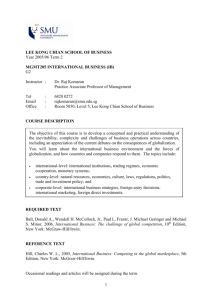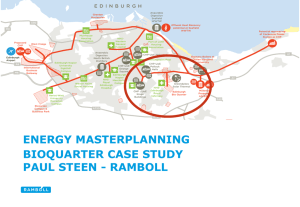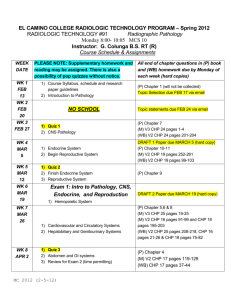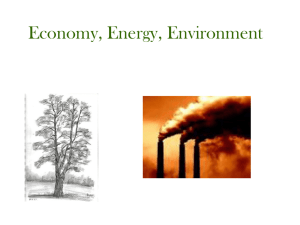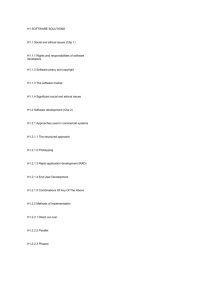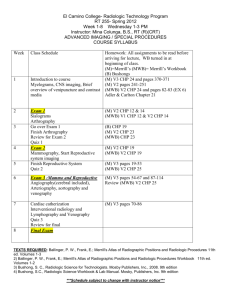Combined Heat and Power (CHP)
advertisement
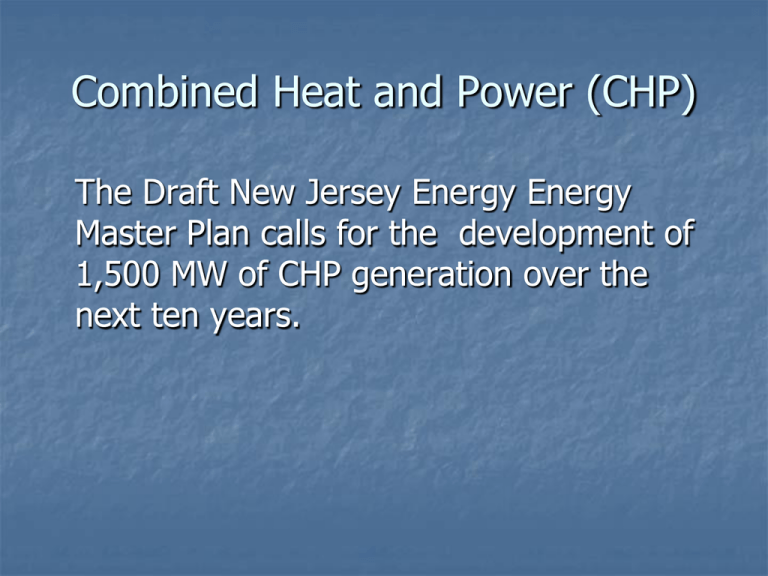
Combined Heat and Power (CHP) The Draft New Jersey Energy Energy Master Plan calls for the development of 1,500 MW of CHP generation over the next ten years. Typical CHP System CHP can avoid 60% of the potential growth in carbon dioxide emissions between 2006 and 2030. General Permits/ General Operating Permits Under Development GP Number Title Status GP-021/GOP005 CHP using Turbines Available for use Sept. 19, 2011 GP-022/GOP006 CHP using Spark Ignited Engines Available for use Sept. 19, 2011 Advantages of CHP Enhance our energy security by reducing our national energy requirements and help businesses weather energy price volatility and supply disruptions Advance our climate change and environmental goals by reducing emissions of CO2 and other pollutants Improve business competitiveness by increasing energy efficiency and managing costs Increase resiliency of our energy infrastructure by limiting congestion and offsetting transmission losses Diversify energy supply by enabling further integration of domestically produced and renewable fuels Improve energy efficiency by capturing heat that is normally wasted. Combined Heat and Power (CHP) General Permit (GP) and General Operating Permit (GOP) GP-021 and GOP-005 for Turbine Units ≤ 65 MMBtu/hr GP-022 and GOP-006 for Spark Ignited Reciprocating Engines ≤ 65 MMBtu/hr The most commonly used approach to determining a CHP system's efficiency is to calculate total system efficiency. Also known as thermal efficiency, the total system efficiency ( o) of a CHP system is the sum of the net useful power output (WE) and net useful thermal outputs (ΣQTH) divided by the total fuel input (QFUEL), as shown below: Power reliability is a critical issue for many industrial and institutional facilities, Loss of electric power represents a quantifiable business, safety, and health risk to their operations. CHP can be a reliable and cost-effective alternative to installing unproductive backup generators to provide protection against extended outages CHP as a Reliability Solution Rather than install a diesel backup generator to provide outage protection, a facility can design capability into a CHP system that provides electric and thermal energy to the site on a continuous basis, resulting in daily operating cost savings Some Incentives for CHP New Jersey EDA has created a suite of financial incentives to help fund clean energy projects. One of which is called the Clean Energy Solutions (CES) fund. It provides interest-free loans and grants to ensure that commercial, industrial and institutional entities have the resources they need to grow and prosper while simultaneously reducing New Jersey’s carbon footprint by employing clean efficient energy solution including CHP. www.njeda.com and applications. select the Clean Energy Solution tab for information (DSIRE) Database of State Incentives for Renewable Energy Established in 1995 and funded by the U.S. Department of Energy DSIRE is a comprehensive source of information on state, local, utility and federal incentives and policies that promote renewable energy and energy efficiency. http://www.dsireusa.org/



